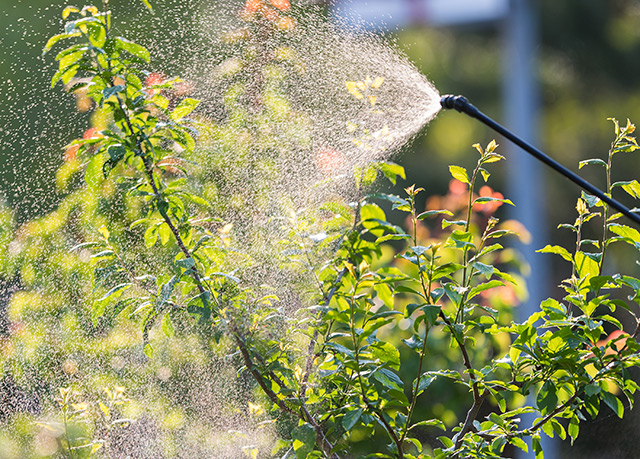Profenofos – toxicity, side effects, diseases and environmental impacts
11/11/2017 / By Frances Bloomfield

Profenofos is an organophosphate insecticide characterized by its pale, yellow color and strong, garlic-like odor. This chemical is largely use to control the pests that target crops, specifically caterpillars, aphids, spider mites, and whiteflies. Profenofos does this by inhibiting the action of the acetylcholinesterase enzyme, an enzyme that plays a role in the transmission of signals between nerve cells and muscle cells.
As an organophosphate, however, profenofos has the potential to be highly and acutely toxic to living organisms. As such, there are concerns over the possible risks of profenofos use and exposure.

List of known side effects
According to the U.S. Environmental Protection Agency (EPA), profenofos can impede the activities of the cholinesterase enzyme. This can lead to the nervous system becoming overstimulated and cause nausea, confusion, and dizziness. Exposure to higher dosages of profenofos can result in even more severe side effects like respiratory paralysis and even death. This can occur by inhaling or ingesting profenofos, though cholinesterase levels are known to return to normal weeks after exposure has ceased.
In addition, profenofos can cause organophosphorus poisoning, a condition marked by a wide variety of symptoms which range from chest tightness to incontinence to muscle twitching to rhinorrhea, or excessive mucus production in the nasal cavity. This typically results from repeated exposure.
Furthermore, profenofos is a moderate skin and eye irritant.
Far from just affecting humans, profenofos can be harmful to bees and fish as well. Bees are especially vulnerable to the toxicological properties of profenofos.
Body systems affected by profenofos
Profenofos can be considered harmful to the central nervous system due to its negative influence on the process of neurotransmission.
The skin, eyes, digestive, and respiratory systems can be affected too, although this can depend on the route of entry.
Items that can contain profenofos
These products are stated to contain profenofos as an active ingredient:
- Curacron
- Devi-Soldier
- Ellak
- Fertifenophos
- Hilfos
- Selecron 500 EC
Moreover, these manufacturers and suppliers have either produced or continue to produce profenofos:
- AgroCare
- King Tech Corp
- Syngenta
How to avoid profenofos
Those involved in the production process and usage of profenofos are recommended to wear the appropriate gear as necessitated by the available material safety datasheets. Safety glasses, chemical-resistant gloves, respirators, and long-sleeved shirts and pants are the standard. Eating and smoking around profenofos only increase the risk of this chemical entering the body, so make it a point to avoid doing either when exposed to profenofos.
Storing profenofos will entail keeping it in its original container in a dry, cool, and well-ventilated area. Never store it alongside food, seeds, and fertilizers, and keep it away from moisture and extreme heat.
Where to learn more
Summary
The primary issue with profenofos is that it can overstimulate the nervous system and cause a person to experience nausea, dizziness, respiratory paralysis, and death, in some extreme cases.
As an organophosphate, profenofos can cause organophosphorus poisoning. This condition is marked by incontinence, muscle twitching, and chest tightness.
Profenofos is an irritant of the skin and eyes, and can damage the respiratory and digestive systems if inhaled or ingested.
Sources include:
Sitems.Herts.AC.uk
EPA.gov
PesticideInfo.org
RayFull.com
PubChem.NCBI.NLM.NIH.gov
Tagged Under:



















